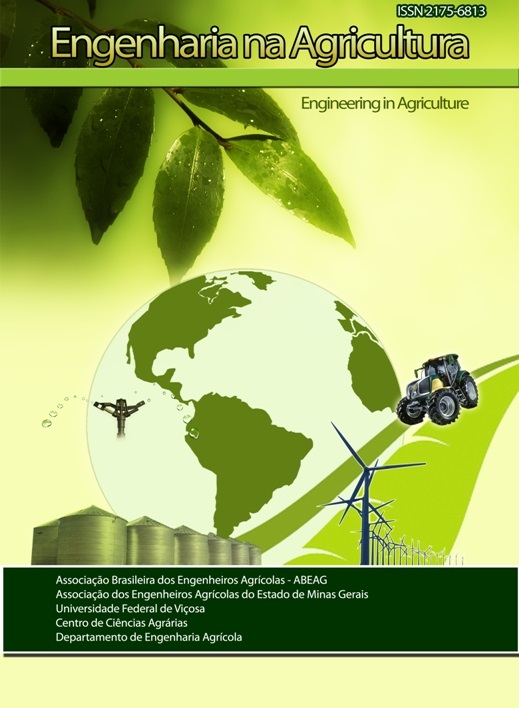CHEMICALS AS CONDITIONERS ON THE QUALITY OF THE POULTRY LITTER OF COFFEE’S HUSK
DOI:
https://doi.org/10.13083/reveng.v26i3.772Keywords:
poultry production, coffee production, organic compound, chemical conditioners, N-ammoniaAbstract
The poultry litter keeps the birds comfortable and absorbs the humidity generated in the environment, reducing the feet injuries. Then, its quality is essential. The objective of the present study was to evaluate the quality of the coffee husks's poultry litter, treated with chemical conditioners, based on its humidity, N-ammonia, pH and bacteria total counting. The experiment was carried out in Minas Gerais state, Brazil, in a coffee producer region. It were used three facilities, in which it were placed circular boxes, each of them divided in seven parts, 2 m2 each one, where it were put the different types of poultry litter, being that the seven treatments: sawdust and coffee husks litter, being this last, new and untreated or treated with different conditioners and reused. Twenty-two chicks were distributed in each treatment (154 birds per facility, 11 birds m-2). Litter samples were collected at 7, 21 and 42 days of birds age. The hydrated lime increased the pH in the initial phase (7 days) and decreased the moisture of the reused litter, compared to the new one. The gypsum reduced the pH of the litter at the end of the second phase. The N-ammonia content of the reused litter, without treatment, was superior compared to the new one, untreated and treated with lime. There was no effect on the standard counting of bacteria and on the surface temperature of the litter. Then, the use of chemical conditioners in the poultry litter constitutes a good strategy to control its quality, as well as the environmental conditions to produce poultry meat.Downloads
Downloads
Additional Files
Published
How to Cite
Issue
Section
License
Authors who publish with this journal agree to the following terms:
The author(s) authorize(s) the publication of the text in the journal;
The author(s) ensure(s) that the contribution is original and unpublished and that it is not in the process of evaluation by another journal;
The journal is not responsible for the views, ideas and concepts presented in articles, and these are the sole responsibility of the author(s);
The publishers reserve the right to make textual adjustments and adapt texts to meet with publication standards.
From submission, the author is fully conceding the paper's patrimonial rights to the publication, but retaining the owner of its moral rights (authorship and paper's identification) according to Creative Commons Attribution-Noncommercial.








 Licensed by
Licensed by 